A well-designed garden border does more than separate plants from pathways—it frames the entire landscape, adds structure, enhances visual appeal, and defines outdoor spaces. Garden borders provide balance, complement flower beds, and can transform an ordinary yard into a visually stunning oasis. In 2025, modern landscaping emphasizes aesthetic functionality, sustainability, and creativity. This guide explores five gorgeous garden border designs that can elevate any outdoor space, along with step-by-step ideas, plant choices, and design considerations.
Why Garden Borders Matter
Before exploring designs, it’s essential to understand why garden borders are important:
- Visual Structure: Borders provide clean edges, making gardens look organized and intentional.
- Plant Protection: They prevent grass and weeds from encroaching on flower beds.
- Soil Retention: Borders help maintain soil and mulch, reducing erosion.
- Seasonal Appeal: Thoughtful borders can highlight seasonal flowers and foliage.
- Increased Property Value: Landscaped gardens with well-defined borders enhance curb appeal.
By framing outdoor spaces, borders create natural transitions between different garden zones, paths, or patios, establishing harmony and flow.
1. Classic Brick and Stone Borders
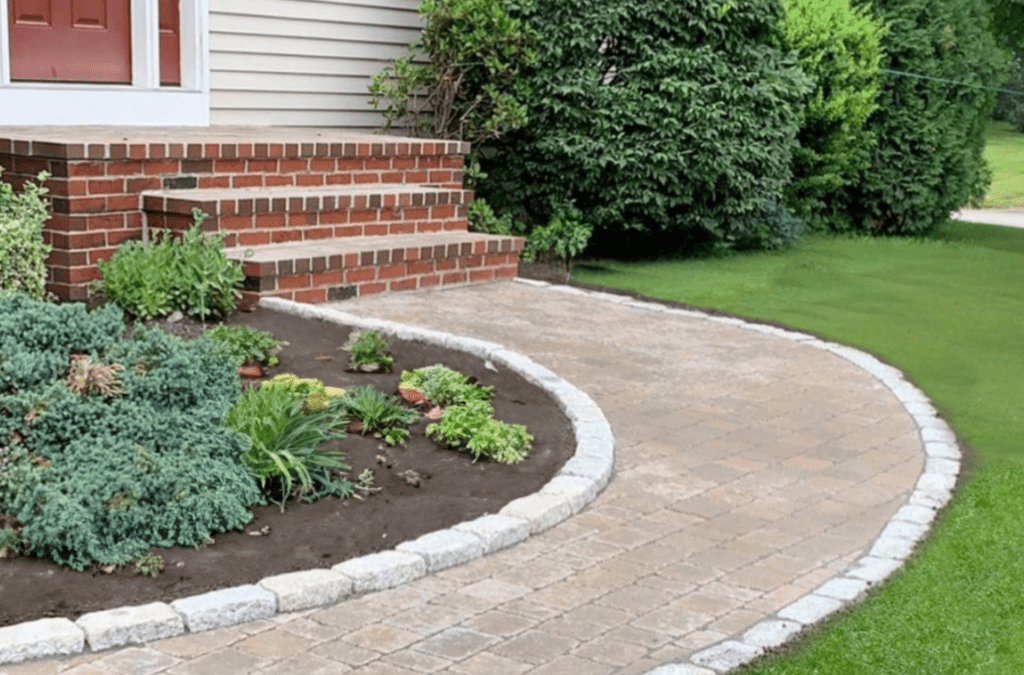
Overview
Brick and stone borders are timeless, sturdy, and versatile. They suit formal gardens, courtyards, or pathways and provide long-lasting durability.
Design Tips
- Use red bricks for a traditional look or natural stone for rustic charm.
- Create straight or curved borders depending on garden layout.
- Stack bricks or stones to form low walls for flower beds or raised garden edges.
Plant Pairings
- Lavender (Lavandula) and roses complement brick borders.
- Succulents and ornamental grasses work well with stone borders for a naturalistic look.
Maintenance
- Inspect for cracks or displacement periodically.
- Remove weeds growing between bricks or stones.
- Apply moss or lichen for a vintage effect in rustic gardens.
2. Wooden Timber Borders
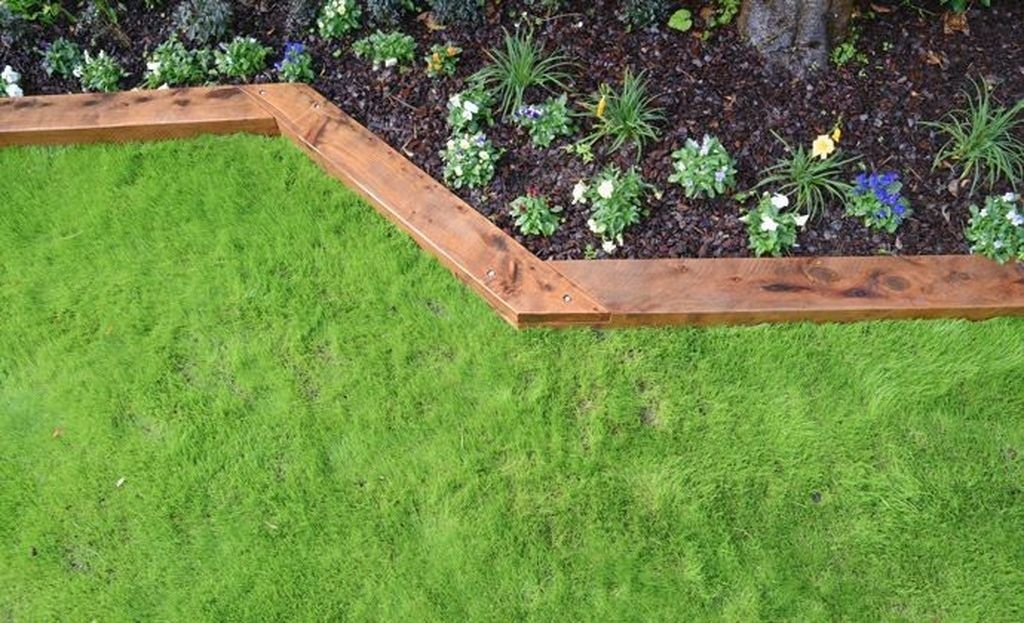
Overview
Wooden borders offer warmth, texture, and a natural aesthetic. They are ideal for cottage gardens, vegetable patches, or casual landscapes.
Design Tips
- Use treated timber, cedar, or reclaimed wood for durability.
- Arrange planks vertically, horizontally, or in staggered patterns.
- Combine wood with stones or pebbles for a layered effect.
Plant Pairings
- Herbs like basil, thyme, or mint for kitchen gardens.
- Perennials such as daylilies, hostas, and daisies enhance rustic charm.
Maintenance
- Apply water-resistant sealants to prevent rot.
- Replace damaged planks promptly.
- Ensure borders are slightly raised to prevent water accumulation.
3. Living Plant Borders
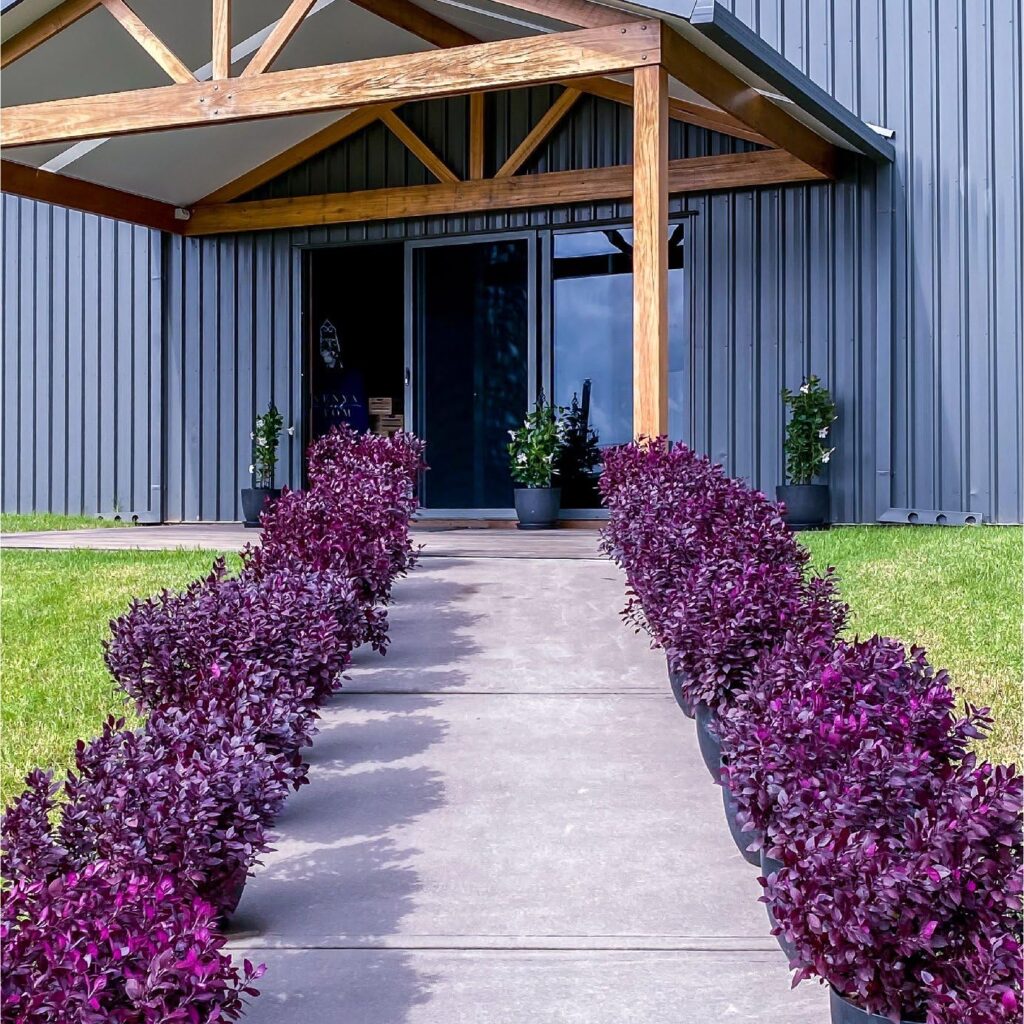
Overview
Living borders use plants as natural edging, blending seamlessly with the garden. They offer color, texture, and year-round appeal while promoting biodiversity.
Design Tips
- Choose low-growing shrubs or compact perennials for neat edges.
- Mix flowering and foliage plants for seasonal interest.
- Create symmetry or organic curves depending on garden style.
Plant Options
- Boxwood (Buxus sempervirens): Ideal for formal, clipped borders.
- Lavender (Lavandula angustifolia): Fragrant, flowering, drought-tolerant.
- Creeping thyme (Thymus serpyllum): Ground-hugging and aromatic.
- Ornamental grasses: Add height, movement, and texture.
Maintenance
- Trim regularly to maintain defined edges.
- Mulch to conserve soil moisture and suppress weeds.
- Fertilize appropriately for consistent growth and flowering.
4. Rock and Pebble Borders
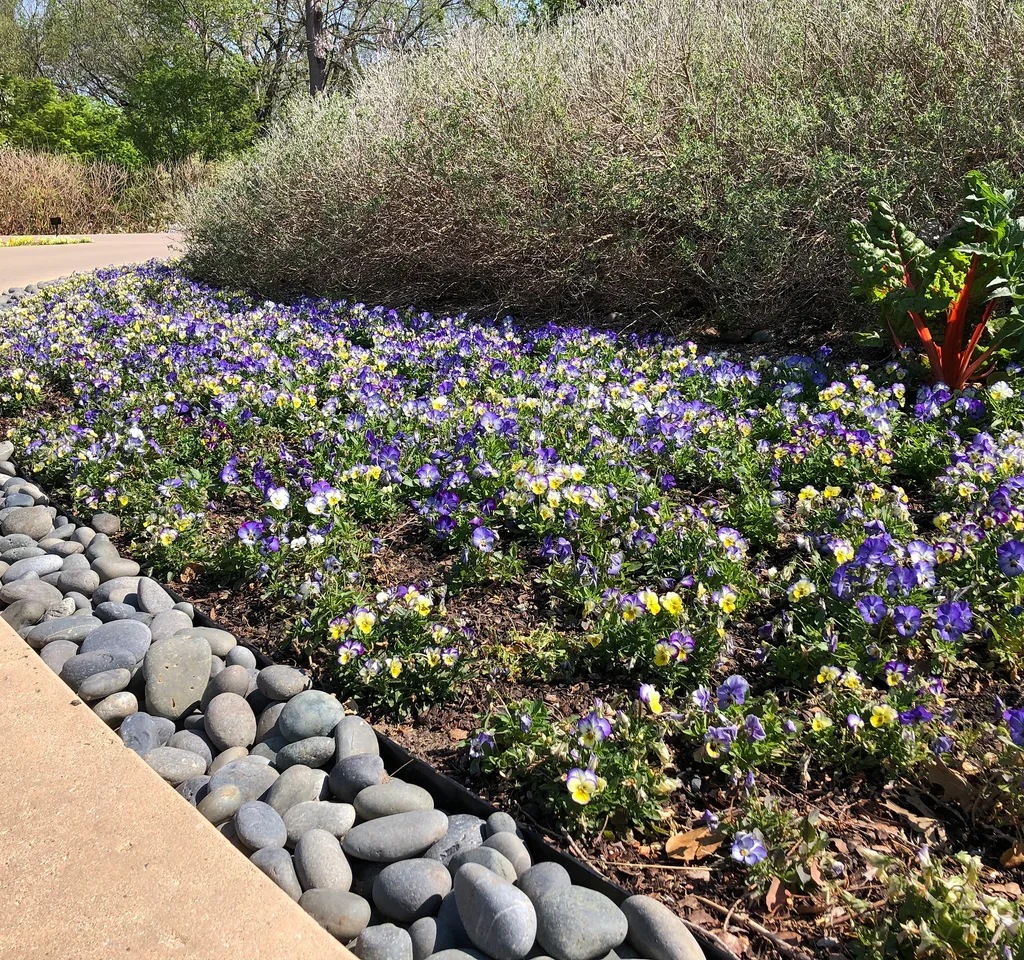
Overview
Rock and pebble borders offer a low-maintenance, modern look. They work well for dry gardens, xeriscapes, and areas with high foot traffic.
Design Tips
- Use river rocks, pebbles, or crushed stones in uniform sizes.
- Combine rocks with low plants for contrast.
- Create layered borders with larger stones at the base and smaller pebbles on top.
Plant Pairings
- Drought-tolerant succulents and cacti for dry landscapes.
- Ornamental grasses for movement and contrast.
- Groundcovers like sedum or creeping juniper to soften edges.
Maintenance
- Periodically remove debris and fallen leaves.
- Replenish stones to maintain defined edges.
- Ensure proper drainage to prevent waterlogging.
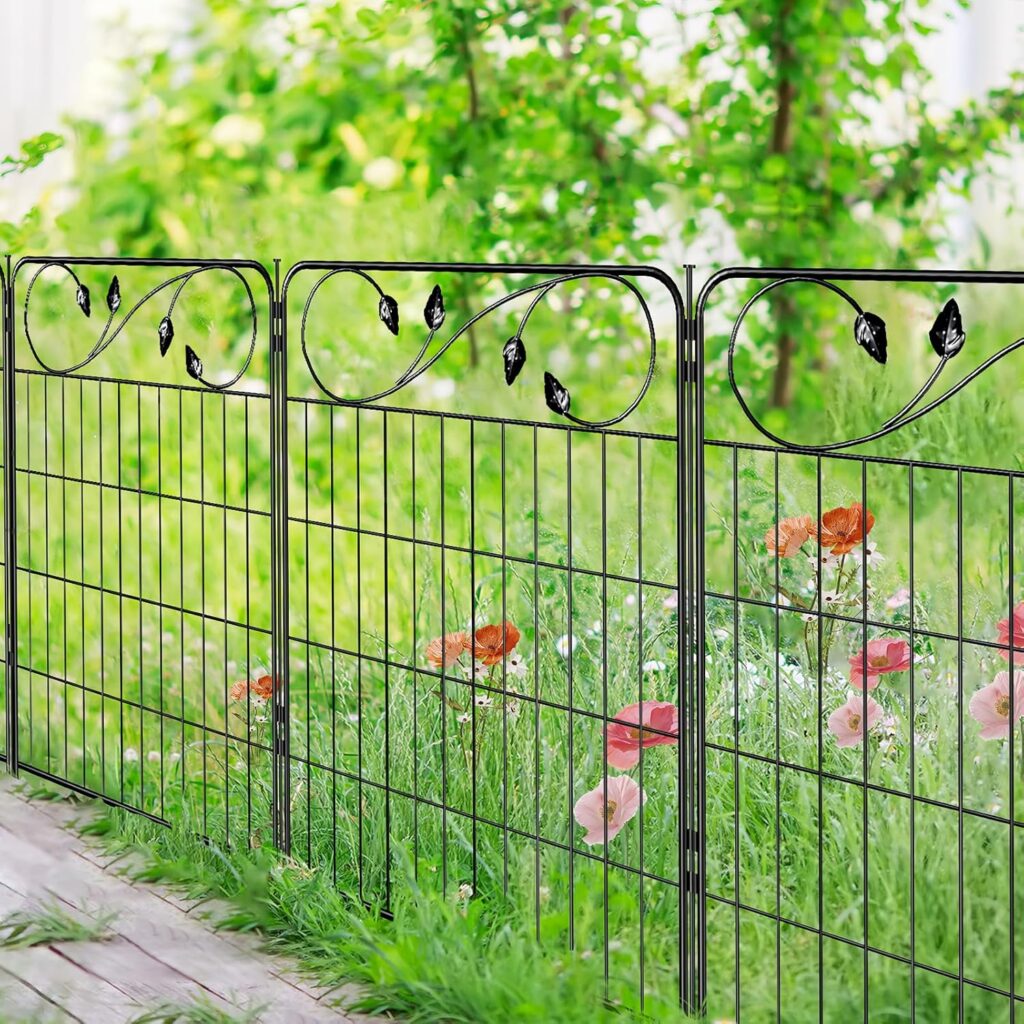
5. Decorative Metal and Edging Borders
Overview
Metal garden borders, including aluminum, steel, or wrought iron, add a sleek, modern look to contemporary landscapes. They are durable, rust-resistant (if treated), and easy to shape into curves or geometric patterns.
Design Tips
- Choose powder-coated or galvanized metal for long-lasting performance.
- Use low-profile edging to blend with the soil or create raised edges for a statement look.
- Curved designs soften garden lines, while geometric shapes emphasize structure.
Plant Pairings
- Low perennials like heuchera, hostas, and dianthus.
- Succulents for modern minimalist gardens.
- Seasonal flowering plants to highlight the metal contrast.
Maintenance
- Clean metal edges periodically to prevent rust and debris buildup.
- Inspect for warping or bending after heavy rain or frost.
- Repaint or reseal as needed to maintain appearance.
Design Considerations for All Borders
- Height and Width: Adjust according to the scale of plants and garden size.
- Consistency: Maintain uniformity in materials and spacing for visual harmony.
- Curves vs. Straight Lines: Curved borders create natural flow, while straight borders convey formal elegance.
- Integration with Pathways: Borders can guide movement and complement walkways.
- Seasonal Interest: Combine evergreens, perennials, and seasonal flowers for year-round appeal.
Additional Tips for Stunning Borders
- Layering: Combine tall and low plants for depth.
- Color Coordination: Match or contrast plant colors with border materials.
- Texture Play: Mix smooth, rough, and spiky foliage for interest.
- Lighting: Install garden lights along borders to highlight features at night.
- Edging Accessories: Incorporate small statues, rocks, or decorative mulch for accent.
Conclusion
Garden borders are more than functional—they are an essential design element that frames your outdoor space and elevates the overall landscape. By choosing the right materials, plants, and design techniques, homeowners and landscapers can create stunning, well-defined edges that enhance aesthetics, improve plant health, and organize the garden layout.
The five designs discussed—brick and stone, wooden timber, living plant, rock and pebble, and decorative metal borders—offer a range of styles from classic to contemporary. Each approach provides unique advantages, whether emphasizing durability, natural beauty, low maintenance, or modern elegance.
When planning garden borders, consider scale, material, plant selection, and seasonal interest. Regular maintenance, trimming, and alignment will ensure your borders remain gorgeous, functional, and visually cohesive throughout the year. With thoughtful design, garden borders can transform ordinary outdoor spaces into inviting, well-framed landscapes that impress neighbors, visitors, and passersby alike.
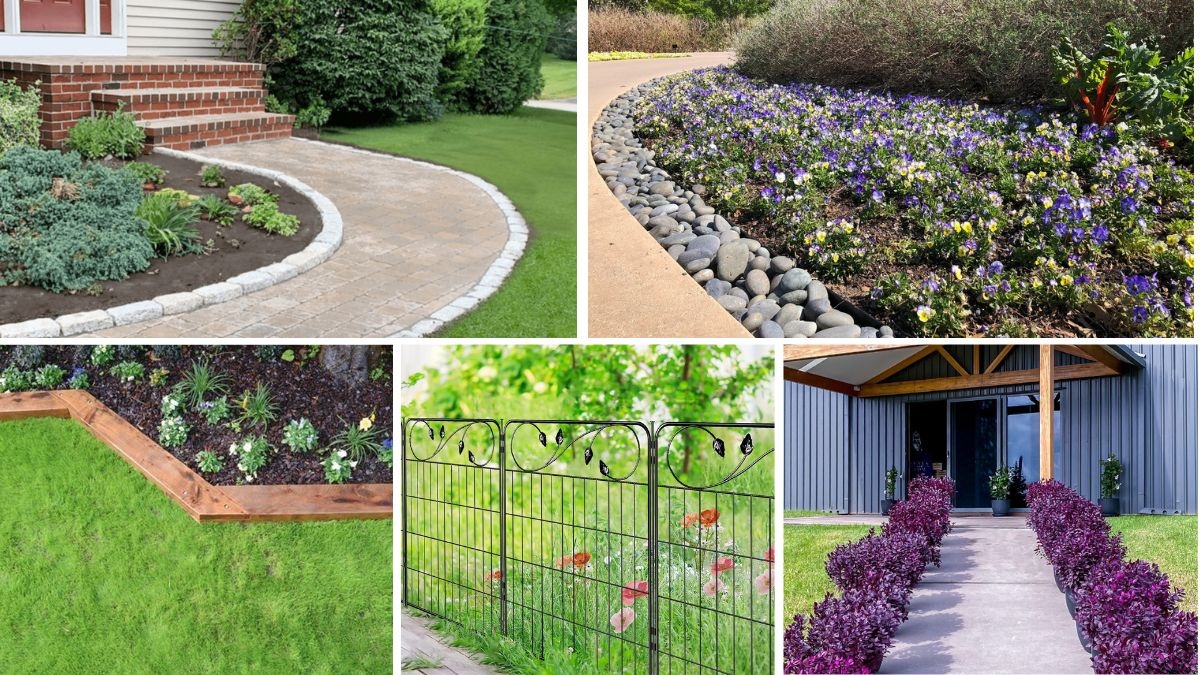

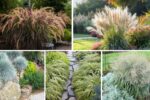


Leave A Comment